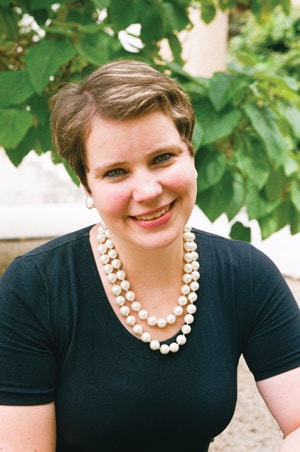Barbara Diehl and Eileen Diskin address the age old question whether entrepreneurship is a case of nature over nurture?
In the 1970s thriller novel The Boys from Brazil a Nazi hunter, loosely based on Simon Wiesenthal, uncovers a sinister plot to clone Adolf Hitler by the means of biological engineering. At the time, the scientific basis for the technology was still in its infancy. Yet ever since Gregor Mendel – often referred to as the father of genetics – started tinkering with peas and pods, and the double-helix structure of DNA made its stage appearance in 1953, the idea that man can be understood (and manipulated) based on his or her genes, has fuelled popular imagination from science fiction to Hollywood.
Today, breakthrough advances in genomics, proteomics and, lately, a sexy genetic biotech tool called CRISPR, are capturing the headlines. The technology allows the efficient cutting and pasting of DNA bits in and out of nature’s blueprint. Ethical implications aside, companies are in hot pursuit in seeking to mine the genetic treasure. According to Boston Consulting Group, over one billion US dollars of venture capital financing has been invested into gene editing technologies in the last two years.
In the 1970s and ’80s, the idea of genetic determinism unleashed a series of fierce culture wars between those believing in the influence of genes over things like IQ or the propensity towards violent crime (nature) and others stressing the role of culture, lifestyle and the environment in shaping body and mind (nurture). Some 40 years on and many researchers acknowledge that the dichotomy between nature vs nurture has outlived its usefulness giving rise to new areas of scientific enquiry, such as epigenetics, which investigates the influence of the environment on gene expression.
TO BE OR NOT TO BE
Yet, the snag is that the debates about the relationship between environment and heritage always centre around defining the well-rounded ‘norm’ or the balance of power between the two. However, when it comes to explaining extraordinary achievements, be it in sports, art or business, remnants of the old nature vs nurture dichotomy keep creeping back in. For example, some researchers point to a relationship between entrepreneurial success and Asperger’s syndrome (a mild form of autism), ADD, dyslexia or other ‘on the spectrum’ diagnoses.
These conditions, so goes the saying, predispose the individual to see things slightly differently from ‘normal’ people, thereby enabling them to spot unexploited opportunities. Famous dyslexic maverick entrepreneurs include Steve Jobs and Richard Branson.
Today, it almost seems that tech companies bend over backwards in their worshiping of nerds á la The Big Bang Theory. So, where does this leave the more even-keeled, middle-of-the-road-individuals? Are they doomed to be the organisations with men and women standing in the shadow of the misfit genius?
Fortunately, for every nature argument there is almost always a nurture one too. So, when it comes to explaining entrepreneurial achievement other explanations point to the role of the ecosystem that complements and enables individual entrepreneurial drive. This includes the presence/absence of organisations, institutions, cultural norms and other factors that are conducive/inhibitive to entrepreneurial success. Especially in the discourse on early-stage venture activity, the abundance of ecological metaphors is certainly remarkable. We talk of budding entrepreneurs hatched in incubators, often described as greenhouses, and funded through seed money stemming from acorn funds.
PRACTICE MAKES PERFECT
At the Innovation Academy in UCD, we believe that juxtaposing whether entrepreneurs are born or made is an artificial and misleading dichotomy. It is usually deployed when seeking to explain feats of extraordinary success. Yet, it does millions of hard-working entrepreneurs a serious disservice by iconising the superstars as the norm rather than the exception.
We think that entrepreneurship and the ability to develop entrepreneurial ideas is neither art nor science, but practice. The more often one engages with the process, the better one gets. We also believe that individuals have an extraordinary capacity to change. As they tackle challenges and solve problems they become more confident and acquire a ‘Yes, I can’ mindset, which is the most important starting condition for any venture, big, small, social, inside or outside of an established organisation.
… when it comes to explaining entrepreneurial achievement other explanations point to the role of the ecosystem that complements and enables individual entrepreneurial drive
We work with many different types of individuals across all of the Academy’s programmes including undergraduate and postgraduate students, job seekers, and industry professionals. Many participants enter the courses saying that they do not see themselves as particularly ‘creative’, but we think that there are certain things that can be done to nurture and inspire creative problem-solving skills in all individuals, wherever they may fall on the creativity spectrum. Though the groups we work with might vary, we have identified a number of factors that seem to be core in nurturing an individual’s creative capacity. The good news is that many of them can be replicated in the workplace.
THE RIGHT ENVIRONMENT
Though most of the Academy’s teaching staff are accomplished entrepreneurs in their own right, we do not attempt to teach creative thinking or entrepreneurship directly – rather we endeavoUr to create an environment in which participants learn through doing. This philosophy is based on best-practice training methods pioneered at major entrepreneurial universities such as Babson College and Stanford d-School.
A classroom in the Academy is not what most readers might remember from their own school or university days, where rows of desks reigned supreme, and teachers or lecturers stood at the front of the room talking whilst students furiously scribbled down notes (or tried to hide the fact that they were totally disengaged and instead busy writing notes to their mate sitting two rows down).
Walk into the Innovation Academy learning space and you might see various groups of students working on an innovation challenge – some clustered at a whiteboard wall, others sitting down around a table with their facilitator working to create a prototype, while another team may not be in the classroom at all, but rather are outside actively engaging in field research to develop and test their ideas.
LEARNING FROM FAILURE

Barbara Diehl, Innovation Academy, UCD
Failure is part and parcel of the entrepreneurial process. We believe that one of the keys in developing an entrepreneurial mindset is accepting and learning from failure. As a budding entrepreneur, one of the hardest things is to be told is that one’s baby is ugly. Yet finding out early that an idea – which you think has the potential to earn you millions – is actually not a runner can be invaluable. It saves time and money and/or provides scope for iteration and the next generation of creative ideas.
Over one billion US dollars of venture capital financing has been invested into gene editing technologies in the last two years
Although we do not teach through lecture slides with multiple bullet points, we do provide our participants with a toolkit which they can apply and use in any creative or problem-solving process.
Most of the learning occurs through activities and challenges designed to question the status quo and inspire an ‘is there a better way to do this?’ mindset. This is achieved through active learning exercises and challenges that inspire the participant to come up with a range of solutions to the problem set out initially.
Many participants emphasise that in their working environments failure is not an option. Probing deeper almost everyone can relate to a scenario in which he/she came up with an idea and was told what a daft idea it was or that it will never fly with senior management. The negative impact such attitudes have on an individual’s engagement with problems arising in the workplace or the business context cannot be underestimated.
At the Academy we think the first step to a productive workplace is the creation of an environment in which everyone feels encouraged to ideate, iterate and propose solutions to challenges they have identified. After all, which business wants to go down the road of Nokia or Kodak?







